Home Garden Design Ideas For New Gardens
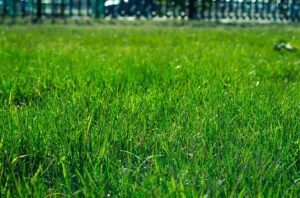 There are many awesome home garden design ideas out there but here are our personal favorites! These ten ideas will ensure your garden is off to a great start.
There are many awesome home garden design ideas out there but here are our personal favorites! These ten ideas will ensure your garden is off to a great start.
Getting a garden started when you’ve got nothing but grassy ground can seem like an intimidating project. Put your worries aside, you are absolutely capable of achieving this goal!
We can make it a bit easier, though, by breaking it down into easy to understand and simple steps to make sure your garden is fool proof and as self-sustaining as possible!
Table of Contents
Budget for Your Project
First of all, you need to assess your budget. How much money do you want to put into this garden? Don’t think that you’ll have to give up on your budding dreams for a garden paradise if you’re strapped for cash.
You absolutely can do a garden on a budget! It does usually mean that you will have to either put forth more in either time and/or effort, but where there is a will, there is a way!
If you are a gardening novice, and have no yard work tools to speak of, garage/estate sales and thrift stores are great places to start! Here is a bonus list!
The 7 tools every gardening novice needs:
Gloves
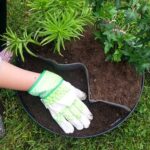
Rake
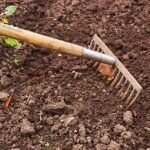
Spade

Hoe
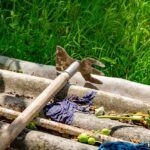
Hose

Pruners
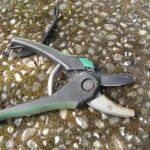
Trowel
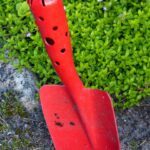
If you are able to get a hold of some or all of these basic gardeners tools, you’re already on the right track! You will also have to think of the possibility of soil, compost/fertilizers, the plants themselves, and garden ornaments if you so desire.
Garage sales are a rich hunting ground for garden ornaments/planters, and if you are going to purchase the soil and/or fertilizer/compost, I recommend local nurseries, but your local big chain garden store will do just as well!
With a good idea of what kind of budget you are working with, you can move on more confidently to the next step.
Assess Your Local Area
 Simple question, lots of meaning… where do you live? Where you live has so much to do with what you will be able to grow in your garden with what amount of effort/investment. For example, if you live in the desert, you will have to spend some money and more effort to grow tropical plants.
Simple question, lots of meaning… where do you live? Where you live has so much to do with what you will be able to grow in your garden with what amount of effort/investment. For example, if you live in the desert, you will have to spend some money and more effort to grow tropical plants.
Knowing your hardiness zone and your local soils will help with the planning of your garden immensely. (For more information on hardiness zones, check out our article that has a whole section on the subject! Check out the indoor/outdoor section.)
Often times you can seek out a nursery or local co-op to have some soil testing done (some charge a nominal fee for the service), simply ask around at those locations, or search for local gardening community online for help! It has been my experience that local gardeners are more than happy to answer questions and provide advice!
 You’ll also need to observe your yard area. What area were you thinking of putting the garden in? Does that area get full sun? Partial? Is it flat?
You’ll also need to observe your yard area. What area were you thinking of putting the garden in? Does that area get full sun? Partial? Is it flat?
Does it provide adequate or too much drainage? Are there windbreaks? (Near a fence/wall etc that would protect plants from harsh winds.)
Is your location near a water spigot or is your visualized garden small enough for a watering can? Should you do an in-ground garden with local plants? Or are you better off doing a planter garden or just putting in a planter box?
There are a lot of variables to consider when looking for/at your potential garden location. Take your time on this step; really visualize it.
Know How You Will Use the Space
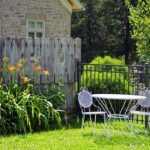 Once you have decided where your location will be, you can really dive into the details of how your space will be utilized! Are you looking for a quiet nook to sit with a glass of iced tea or cup of coffee and relax?
Once you have decided where your location will be, you can really dive into the details of how your space will be utilized! Are you looking for a quiet nook to sit with a glass of iced tea or cup of coffee and relax?
Is it more of a space to provide a pleasant backdrop for your view from your window? Will your kids or grandchildren be playing there?
Are you looking for a place to host a nice bar-b-q? Will this be somewhere you grow supplements to your dinner table? Do you simply  want to increase the local wildlife in your yard?
want to increase the local wildlife in your yard?
There are endless reasons for wanting to create a garden, and all you have to do is determine what yours is. With that in mind, the next step is easier to accomplish!
Decide What You Would Like to Grow
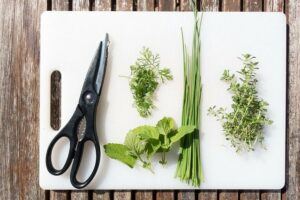
What kind of garden is this? Is it a vegetable garden? Herb garden? Flower garden? Shrub or treeline? A bit of everything?
Since we know where the garden will be placed and how the space will be used, the selection of plants that will fit those criteria has been narrowed down considerably. There are still plenty of options, don’t worry!
Now, however, you have a better idea of what to select that will bring you the most immediate and sustained success!
Within this step is another rather large consideration… perennials or annuals? Perennials are plants that will continue to grow year after year, with little to no need to replant or remove existing plants,  but in most cases, are dormant in the winter.
but in most cases, are dormant in the winter.
As the name suggests, annuals are often colorful plants/flowers that are planted to provide the beautiful blooms/foliage and then die; so they need to be planted anew each year.
Often times gardeners will supplement perennial gardens with annuals during the fall and winter (where applicable) to provide beautiful scenery year-round. Whichever you choose, both have their perks and their challenges.
Prepare the Soil
Depending on whether you are doing an in-ground garden, or a planter/above ground garden, your next step will vary. If you decide to go in ground, you will have some 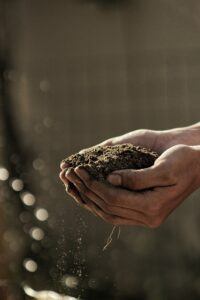 work to do with getting the ground ready for planting.
work to do with getting the ground ready for planting.
This can include killing off the grass or removing existing plants. (Often times gardeners will find a way to simply transplant existing plants to a different location on their property if one is in the way of a current garden bed location.
However, don’t feel bad about tossing a whole plant on the compost pile, it will pay off later! Don’t worry, we’ll get to composting in just a minute!)
You will also have to look at fertilizing or amending your soil if you are doing an in-ground garden and you want to grow plants that are either non-native, or have specific soil requirements.
For Example, Blueberry bushes can have a varied range of hardiness- check your variety’s requirements- but all have a requirement for a higher concentration of nitrogen in their soil.
Pro tip: coffee grounds are an excellent source of nitrogen and- bonus! – blend in perfectly with lots of soils!)
If you decide to create a planter garden, either in small planters or a large planter box, you will want to prepare your soil and manually place it in the planters.
This can make it easier by simply allowing you to go to your local nursery or garden supply store to procure however many bags of soil you need to get your garden up and running. This may seem the easier option, but is often more expensive.
Whichever way you decide to go, getting your soil ready properly can save you both time and money! There is a saying, “Feed the soil and the plants will take care of themselves.” which brings us to our next section…composting!
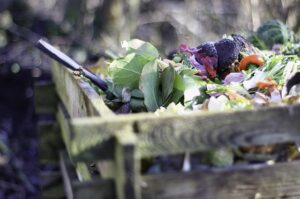
If you are going to start gardening, you might want to consider starting a compost pile. It’s really not as hard as you might think!
If your soil is put in/started well, you’ll find that there’s less work needed on the everyday maintenance.
It is both an investment in your future work requirements, a way to help the environment, and a money saver!
For more information on composting, check out our top composting tips here!
Now that you’ve got the “canvas” prepped… it’s time to start “painting” your beautiful garden!
Seeds or Transplants
Deciding on seeds or transplants is truly a personal preference in my opinion. When you envisioned your ideal garden use for your space, what was the time frame like? Are you on January 1st hoping to have a setup and stocked garden by spring? That goal is absolutely attainable! That will take a considerably larger budget, but it can be done!
Were you looking at more of a long-term, lower budget progression of your garden space? Timing not only has a major factor on your budget, but also in your determination of using seeds versus using transplants. Let’s look at the benefits of each, and you determine which would be best for your garden oasis.
Seeds: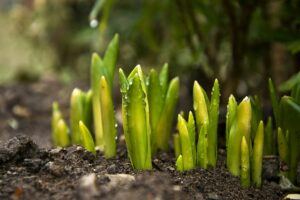
Overall seeds are notably cheaper, but more time and attention heavy. You get a much wider variety of options (as long as you are either looking for plants that will grow in your hardiness zones or using a green house.) to choose from!
There are some varieties of plants that don’t do well unless grown by seed. There is also simply the satisfaction of growing something from seed to harvest/maturity. That is it’s own reward!
Transplants: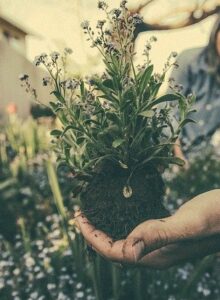
When you select transplants, you often times extend the growing season by quite a bit! (Note: not all plants transplant effectively, but many do. Check with your local nursery or online gardening community to determine which plants meet this criteria.)
You can end up getting twice the blooms, growth, or harvest if done well. You’ll also have the potential to get fruiting, blooms, or new growth much sooner than with seeds.
You can also get exactly what you want, in the quantities you want it in. Transplants tend to have less pest and disease issues.
Whichever way you decide to go, getting your plants in the soil and started on their journey is probably the most exciting step in the creation of your new garden!
Pests and Disease
 Prevention, prevention, prevention. This is the key! When you are looking to help your garden recover from an infestation or a particularly ravaging disease, it can end up being very expensive and time-consuming! The best way to keep your money in your wallet and your time spent on more enjoyable activities is to prevent both!
Prevention, prevention, prevention. This is the key! When you are looking to help your garden recover from an infestation or a particularly ravaging disease, it can end up being very expensive and time-consuming! The best way to keep your money in your wallet and your time spent on more enjoyable activities is to prevent both!
If you see a weak plant struggling without a relatively obvious reason, go ahead and remove it from your garden. The plant might already be infected/infested, and this will both prevent the spread, but also give the plants in its vicinity more room to flourish.
Watering early in the day, and keeping the watering on the soil/base of the plants keeps the foliage from becoming drenched and more vulnerable to fungal damage.
Getting your transplants and your soil amendments (fertilizer/compost) from a reputable source can also prevent the introduction of both disease and pesky pests.
Here’s a helpful hint for all my natural gardeners out there! Seaweed spray and seaweed mulch! The spray will help plants grow (kind of like a multivitamin for plants) and the seaweed mulch is a natural slug repellent.
Mulch
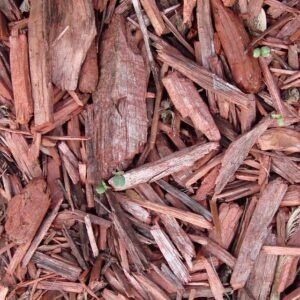 Mulch is one of those things that lots of people think of as ornamental, but it is so much more than that!
Mulch is one of those things that lots of people think of as ornamental, but it is so much more than that!
You not only provide a nice color contrast to compliment with the plants and the garden border in more decorative gardens, but you also protect your plants and provide other benefits.
For starters, with mulching, you end up increasing your watering efficiency! You’d be surprised how much water just evaporates off the soil and never ends up getting used by the plants themselves. It also provided good protection for the root systems during the winter.
If there is less sunlight getting to the soil, there is less chance of weeds popping up all over. (You still want to be watchful and active on the weeding if you see any, but mulch will cut down on the number.)
Certain types of mulch are even very effective as pest protection! (Not just the seaweed mulch we touched on earlier, but also cypress, cedar, and pinewood chips keep different pests away!)
With the soil primed, plants started/planted, and mulch protecting, your garden is as ready as it can be!
Listen to Nature and Nurture
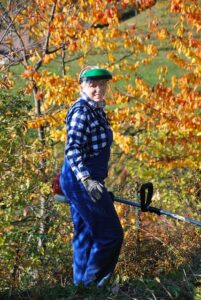 When you are done with the set up of your garden, the real work begins! Providing regular, attentive care for your garden will do more than the most expensive tools or fancy placement ever could!
When you are done with the set up of your garden, the real work begins! Providing regular, attentive care for your garden will do more than the most expensive tools or fancy placement ever could!
Make sure that even if you aren’t able to work in your garden daily, you set up a routine for watering, checking the health of the plants and soil, and preparing for seasonal changes- especially winter.
Often times you’ll be able to tell if something looks off by simply noticing the change in its state from one watering to another. Different plants have different watering needs too, so take that into consideration when placing plants near one another.
You don’t want to place a cactus near a watermelon, for example. (Not only do they need different watering schedules, but they also need different soil to thrive in.) A successful gardener will also pay attention to how a plant is growing.
There are widely varying rates of growth in the wide world of plants. If you don’t see immediate new growth, don’t get discouraged!
There is no need to worry unless you’ve double-checked the particular plant’s typical growth rate and found a concerning discrepancy.
It all boils down to paying attention. As with anything you are caring for, putting your time, energy and- yes, I’m going there- love is essential to its ability to flourish and thrive. The same goes for your garden!
Enjoy
 When all is said and done, your garden is there to be enjoyed. Whether it’s the harvest, the beauty of foliage and blooms, or the landscaping.
When all is said and done, your garden is there to be enjoyed. Whether it’s the harvest, the beauty of foliage and blooms, or the landscaping.
With a little planning, you can create a wonderful place to meet your needs in both function and maintenance level. You have worked hard to create the Eden of your vision! Sit by that window and enjoy the view! Invite the crew over for some BBQ fun!
Start planning your meals for the first harvest! Whatever purpose you put your new garden to, make sure to enjoy every minute of it! You deserve it!
Make Your New Garden a Wonderland with these Home Garden Design Ideas!
 They can be sprawling estates with decades of forethought and dedication poured into the management of them, or a tiny fairy garden in a planter in the corner of the yard.
They can be sprawling estates with decades of forethought and dedication poured into the management of them, or a tiny fairy garden in a planter in the corner of the yard.
All gardens have a purpose, and hopefully, with our top 10 gardening Ideas, you’ve found yours!
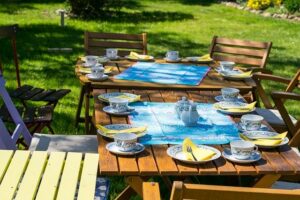 No matter how you decide to arrange your garden, or the size of your paradise, make sure to take advantage of all the beauty and peace working with nature provides. It is wonderful for your soul, as well as your curb appeal.
No matter how you decide to arrange your garden, or the size of your paradise, make sure to take advantage of all the beauty and peace working with nature provides. It is wonderful for your soul, as well as your curb appeal.
We are in the process of setting up our very own new garden space using these home gardening ideas! We would love to see yours in whatever stage of development it is in.
Can’t get enough gardening tips? Check out our Top 10 gardening ideas for fairy gardens here!
With Gratitude,
Randi
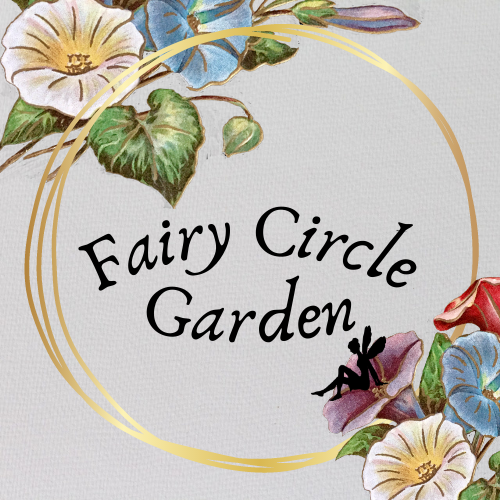
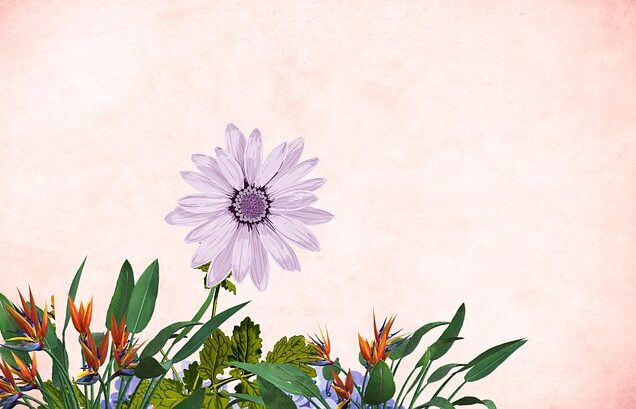

Hi Randi,
It appears that you love gardening. I think that is a wonderful thing, and when you think about it, Gardening does so much for God’s wonderful earth. Wouldn’t it be great if everyone took up gardening? We could replenish the earth to Adam and Eves “Garden of Eden in a very short time.
I like that you explain many things in detail – for taking care of the healthy growth of a garden. That is a necessary thing.
Great show and tell pictures. However some are not as bright and sharp as others, but that is okay. The message is well received.
You do a very good job of explaining soil, pesticides, transplant, pests, and diseases.
Great post, Randi. Great tips. I like it.
Easy Talk – with Clarence
Thank you so much Clarence! I do love gardening! I am glad I covered the bases for you! I agree that gardening does do so much, for both the Earth and our spirit! Have a wonderful day!
Very informative article on putting a garden together from start to finish. The tips that you have presented as to what to do in the various stages of creating a garden were quite helpful.
Thank you for the information….it shows that you have had plenty of experience in the area of gardening and this is a very good “go to” resource.
I am so glad you found it useful! I hope to provide as much help to my fellow gardening enthusiasts as possible! Thank you so much!
Thanks for sharing your ideas and tips on starting a new garden. You have given me a lot of things to think about. I understand that good preparation a half of the job done. Your suggestions are extremely useful. Thanks a lot!
Why thank you for your time! True, good preparation cannot be understated in its importance! Thank you!
Thanks for giving so many important details about how to start gardening. It’s very informative. I can tell from this article that you are very passionate about gardening and you are very knowledgeable about this. If I had a garden, I would definitely start gardening and follow your tips here.
Why, of course! Thank you so much! I truly love gardening and think that no matter your initial skill level, anyone can become a gardener. You don’t even have to start outside. A nice indoor fairy garden in a planter is a fun and easy way to get started! Feel free to check out some of our other articles on here and you might be surprised at how easy it would be for you to get started. Either way, thank you and have a wonderful day!
Your love of gardening is spreading through each of the words of this lovely article!
It’s always great when a person is that passionate about something.
My grandmother used to spend hours working in her garden when I was a child.
And there was something really calming about watching her do her magic.
If I ever have a chance to start a garden of my own, your post will be a great guiding light on how to do it the right way.
Thanks for sharing!
Why thank you very much! I love that story about your grandmother. It really is magic, and I think she knew that. I hope you find a small corner of your life to start your own garden soon! It doesn’t have to be big or even in the ground. I am glad you will be in touch! Thank you
Hello Randi,
One of my hobbies – gardening. I love to grow vegetables and flowers. I use to live in Northern of the US. Recently moved to Southern, and the weather is absolutely different than in Northern. Now, I have to learn how to grow vegetables in the hot and humid weather ( winters are perfect for cabbages and beets)
I like the detailed explanation of the preparation of the soil, disease control, and many other little tips and tricks you wrote in your article.
Great post, which reminds me the spring is here and time for gardening!
A move to a different climate can be a difficult challenge for someone who has gotten accustomed to the weather, soil and overall climate of somewhere else. I believe you are not only up to the challenge, but will find a brand new passion for the new types of gardening you will get to experience in the South. Give tomatoes and peppers a try! I’m very excited about spring’s arrival! Please let me know what you end up putting in your brand new Southern Garden and feel free to share pictures as well! Happy Gardening!
Gardening has become one of my favorite hobbies over the years.
We we moved into our new home it was quite the project.
It was new townhomes and the yard was nothing but rolled out grass on top of clay and rocks.
Looking back I should of rented equipment but did everything with shovels and hard work.
Now many years later I have a good area to garden in.
I’ve grown a lot of variety over the years, some things have grown great consistently, some things never grow well.
I’ve never been successful with melons or eggplant.
Corn, tomatoes, sweet potatoes, squash, and peppers have always grown well.
I live in Maryland.
Any suggestions on why melons won’t grow well or what I should do if I want to try them again this year?
The plant itself grows well but not the fruit FYI
IF you are getting good amounts of healthy foliage but not seeing fruit, the plants themselves are probably too close together. Try putting the melon plants 8-12 inches apart. That would be my initial instincts on why you might be having a difficult time getting fruit. Let me know if that helps!
You addressed one of the outdoor issues I used to have with pests and disease. It’s hard to fight against mother nature but if it wasn’t for reading this article I wouldn’t have known about seaweed spray/mulch or that it could be used for prevention. Thanks this was very helpful and informative.
Of course! ? One of the things I’ve really enjoyed, is finding all the really cool natural methods of solving gardening problems. Let me know how it works for you this year!
Thank you!